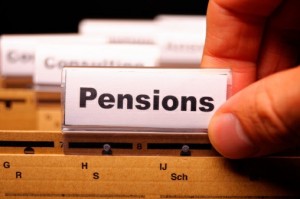Kansas lawmakers stand behind pension perk

KPERKS: Kansas lawmakers benefit from a special form of pension calculation that takes their salary during a normal 90-day session and extrapolates it over the course of an entire year. Proponents say it helps ensure lower-income Kansans can afford to serve in the Capitol.
By Travis Perry │ Kansas Watchdog
OSAWATOMIE, Kan. — From the outside looking in, state Rep. Steve Johnson said it’s easy to see why pension perks for state lawmakers could leave a bad taste.
For most voters, any kind of monetary compensation for elected officials is a hot-button issue, and Kansas Public Employee Retirement System benefits are no exception. Johnson, R-Assaria, says the frustration is in the formula.
“I am not fond of the way legislators’ pensions are calculated,” Johnson said. “It just doesn’t look right or straightforward.”
The issue is in some funky math targeted at determining a yearly salary for a state lawmaker who, at least officially, is on the clock for just a few months a year during Kansas’ 90-day legislative session.
It works like this: For your average public employee in the Sunflower State, KPERS pension benefits are calculated based on a handful of factors, including annual salary, years of service and a multiplier. It’s about the same for state legislators, with one exception — an elected officials’ 12-month pay rate is figured through the use of an annualized formula.
In essence, it multiplies a lawmaker’s base daily session salary of $88.66 over the course of an entire year despite the fact that, at least in theory, the legislative session is supposed to wrap up in late spring. Though, as we saw last year, that doesn’t always happen. The same kind of calculation is applied to subsistence pay, for which lawmakers receive $129 each day they’re in session.
What does all this mean? To boil it down, when you factor in the $7,083 lawmakers receive for non-session pay, their total annual salary looks more like $26,600. But for pension purposes, that figure is inflated to nearly $86,500, on average. That figure assumes a state lawmaker chooses to throw all their compensation — daily salary, per diem expense and non-session pay — into the KPERS calculation; current offerings allow a legislator to use any combination of the aforementioned pay to arrive at a final, annualized pay rate.
On the surface, Johnson concedes it looks problematic, and if it stopped there, he’d take issue with it. The balance, he says, is that lawmakers must also pay a proportionately inflated contribution to take advantage of the pension perk.
“Is it wrong? To me the real answer lies with do you believe legislators are overpaid for their work. I am not sure if the pension can get us there. Salary doesn’t get us to overpaid, per diem can help,” Johnson, who chairs the House Pensions and Benefits Committee, told Kansas Watchdog. “The legislator/employee contribution is absolutely the key. If the benefit was multiplied without paying the corresponding contribution, that would be a huge problem.”
Lawmakers who participate in KPERS must pay-in either 4 percent or 6 percent of their annualized salary, depending on whether they joined KPERS before or after July 2009. For comparison, a 6 percent pay-in rate based on an average lawmaker’s actual compensation would be about $1,600 per year, while that same calculation using an annualized salary rate is just more than $5,000. It’s a perk, to be sure, but it isn’t cheap.
It should also be noted that any public employee, lawmakers included, must rack up at least five years of service before they’re considered vested in the current KPERS system. The average length of service among House members is six years, while Kansas’ Senate boasts an average of just more than five years.
Republican state Rep. Jim Howell of Derby, Johnson’s vice chair on the pension committee, argues that such compensatory calculations are vital to opening the Legislature to all Kansans, not just those who can afford to spend time in Topeka.
“We have a citizen legislature, great stuff,” Howell said. “But in order for the average citizen to serve here, they do need to earn some sort of a living. No one is getting rich here.”
Johnson said that while legislators are officially on-the-job from January through May, there’s a lot of work that happens after-hours, which the average voter isn’t always aware of. When taking into consideration time spent answering emails, attending events and addressing constituent concerns, Johnson asserts it works out to less than minimum wage for most elected officials.
“Many legislators, this is their only job. We do not earn a big salary, but for the purposes of having a reasonable retirement plan would not really work if it was only based on the pay of 90 days,” Howell said. “Again, if this happened, I will contend that the lower-income citizens could not be able to serve. The more the salary or benefits are reduced, the less likely the average Kansan will be able to serve here and make a difference.”
Contact Travis Perry at travis@kansaswatchdog.org, or follow him on Twitter at @muckraker62. Like Watchdog.org? Click HERE to get breaking news alerts in YOUR state!
The post Kansas lawmakers stand behind pension perk appeared first on Watchdog.org.








